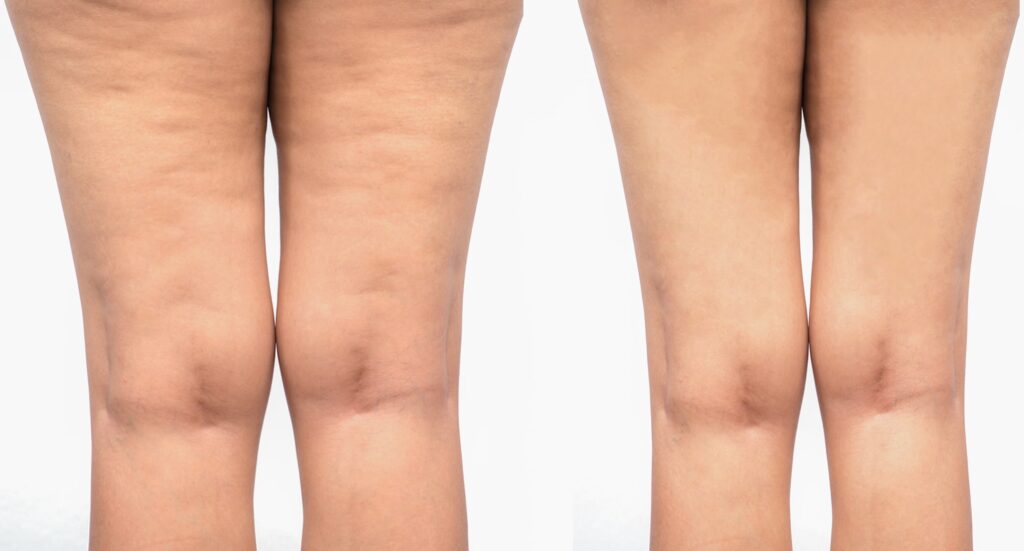Cellulite is one of those miserable things that happens to most people, and that has very few treatment options. The actual definition of cellulite is the dimpling of the skin that causes the texture to be uneven and look puckered. It happens because the skin is connected to the underlying muscle by thin fibers that hold it in place. In between the fibers, the skin is loose, and untethered. The untethered skin can either be tight and taught, lining up well with the tethered spots, or it can be loose and bowing out in between the fibers themselves. When the skin is bowing out, either from being loose or from having fat pushing out on it, this causes a difference between the two areas, and hence the uneven surface.
When there is a difference between two points of attachment, the only way to even things out is to either tighten the loose area, or loosen the tight area. In order to tighten the loose area, you could suction fat out, as in liposuction, but then the skin must spring back in order for things to flatten out completely. This is why liposuction works fairly unpredictably for this purpose, although it can sometimes be surprisingly effective. If the skin were that tight to begin with, then it would hold a lot of the fat itself, and the cellulite effect would be minimal.
There are many devices that work to tighten the skin in hopes of helping everything smooth out. While some can have some success, there is also a lot of room for risk. Most tightening devices are some type of laser or other ultrasound treatment that essentially burns the skin in a controlled fashion. This deep, targeted, controlled burn can produce some tightening, but it is rare for it to work in a completely controlled and systematic fashion to the point where it only tightens what you want and not what you don’t. What is more common is that the device is either on a low setting and produces little effect, or it is on high and can cause some inadvertent damage to the skin. Even in cases where the effect is on target, if the tightening occurs both in the bowed out areas and the tethered areas, you might get general tightening everywhere, without the evening out between the two. In essence, the cellulite effect would not be blunted.
Going at it from the other side, in order to disrupt the tethered areas, you would have to cut the tethers. These connections between the fascia and the skin do not lend themselves to stretch, so they have to be completely disconnected. There are devices that do this, and they successfully cut the tethered fibers, but the problem is that they also cut everything else in their path. This can mean risk of disrupting blood flow, nerves, and other structures. Also, because the tethers are cut, and because they are the support for the skin itself, this can lead to a smoother contour but an overall saggier skin. Again, not ideal for what you are trying to achieve.
All in all, surgical and minimally invasive techniques still leave a lot to be desired when it comes to cellulite treatment. They rarely work well and often lead to complications. Until we have a more effective and controlled method for cellulite therapy, my preference is topical treatment.
Skin care technology has reached a point where you can get some real improvement in the appearance of cellulite, simply by plumping the skin. The trick is to have the right ingredients that will allow for a slightly different amount of plumping on the loose vs. tethered areas. As a general skeptic, I would not have thought that you could get much of a result from a cream, but I stand corrected! It is because of this discovery that I created the B3 line, specialized for skin firming in various areas, including those stubborn crumbly thighs. It takes regular use and a little commitment, but the low-risk high-reward nature of this approach is right up my alley. Forget the lasers and tasers and the money down the drain. Show yourself a little love with a daily massage (insert link to the new firm page), and you can stand firmer after all.


